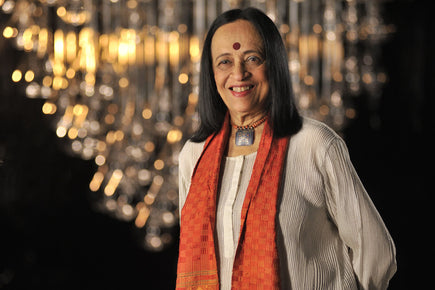5 Indian Tribal and Folk Art Forms You Need to Know
Home to more than 2,500 tribes and ethnic groups, a large part of India’s cultural diversity is etched in the varied art forms of the country’s indigenous people.

Over the years, these ancient forms of art have undergone changes. Natural pigments and dyes have been replaced by acrylic paints and inks, and while the traditional paintings were mostly used for decorating walls of houses, they are now portrayed on canvasses.
In spite of this, tribal and folk art today, gives us a glimpse into India’s rich heritage. Here are 5 such art form that you need to know!
WARLI
An ancient tribe inhabiting the states of Gujarat and Maharashtra, the Warlis are known for their rudimentary wall paintings, reflecting a long-standing tradition that goes back thousands of years.
Renowned for its simple yet unique portrayal of life, Warli art features geometrical shapes that represent humans and animals. The paintings portray hunting, fishing and farming scenes, festivals and dances.

Depiction of the Mother Goddess as the symbol of fertility, as well as the "Tarpa dance" is a common theme. The tarpa, an instrument played in turns, features often at the centre, around whom entwined men and women move in a circle. This is believed to resemble the circle of life.

The technique of Warli art is simple. A bamboo stick is used as the paint brush, and white colour made of rice paste, is used on a red ochre background. Sometimes, acrylics are also used instead of the rice paste, along with cow dung and gerue (red earth) for the earthy backgrounds.
 (Left: Warli art made using gerue or red earth; Right: Warli art made using cow dung)
(Left: Warli art made using gerue or red earth; Right: Warli art made using cow dung)
SAURA
A jungle tribe with a distinct culture, the Saura are found in Odisha, Jharkhand, Madhya Pradesh and Maharashtra.
Saura art displays the glory of nature. Most paintings are based on a central concept known as the ‘Tree of Life’, whose branches are home to animals and humans, conveying the beautiful relationship between man and environment.

Saura paintings, called ikons, hold religious significance, and are usually made as a dedication to their deity, Idital. In traditional Saura art, the natural colours used are derived from sisal, neem and other herbs and flowers.

Saura art is often mistaken for Warli art of Western India. There are, however, subtle differences between the two. Like Warli art, Saura also features characters in geometrical shapes, but the Saura forms are larger and more elongated. Further, Saura paintings use a fish-net approach, creating the border first, and then closing inwards on the motifs, unlike Warli. The physical differentiation between men and women, which is very prominent in Warli art, is not as noticeable in Saura art.
 (Left: Saura Painting; Right: Warli Painting)
(Left: Saura Painting; Right: Warli Painting)
BHIL
Tracing their ancestry to the powerful archer, Ekalavya of Mahabharata, the Bhils are one of the largest tribes in India, found in Madhya Pradesh, Gujarat, Rajasthan and Maharashtra.
Bhil art portrays tribal life in vibrant colours. Reflecting changing seasons as well as natural phenomena, everything connected with their life is painted – the Sun, the Moon, the animals, trees, rivers, mythological figures and their Gods.

Be it on paper or on the walls of their home, there is no doubt that Bhil art reflects the tribe’s innate sense of aesthetics. The Bhil artists use herbal colours and vegetable dyes, such as kumkum, haldi, kajal, rice, mehendi and limestone, as well as acrylic paints.

MADHUBANI
Known for its intricate motifs and vibrant colours, Madhubani or Mithila painting is an Indian art form developed by women from the region of Mithila in Northern Bihar. Though practiced for hundreds of years, Madhubani paintings were relatively unknown, and “discovered” only in 1934, when during an inspection after an earthquake, a British colonial officer came across them on the walls of houses.

Traditionally made during special occasions and ceremonies, Madhubani paintings mostly depict nature and religious motifs. The themes revolve around deities like Krishna, Rama, Shiva, Durga, Lakshmi, Saraswati, and objects like the sun and moon are also widely painted. It is believed that this art form originated during the time of Ramayana, when King Janak commissioned artists to paint pictures on the occasion of his daughter Sita’s wedding.

These paintings are done with fingers, twigs, brushes, nib-pens and matchsticks, and natural dyes and pigments, such as turmeric, soot, cow dung, indigo, rice powder, sandalwood and rose are still in use. An interesting feature of this art form is that the artists aim to cover every possible inch of the canvas with patterns, filling the gaps with flowers, animals, birds and geometric designs.

GOND
Among the largest tribes in India, the Gonds have a recorded history that goes back 1400 years. They are present in significant numbers in Madhya Pradesh, Andhra Pradesh, Chhattisgarh and Odisha.

The Gonds are said to place faith in an old belief that says that a good image brings good luck, and it is this belief that can be found at the root of this art form. Concerned with warding off evil and ushering in good luck, the Gonds would decorate their houses with traditional tattoos and motifs.

For the Gond, everything is intimately connected to nature, and their art features motifs that depict their beliefs and rituals, life in the village, and man’s remarkable relationship with nature. Renowned for their vibrant colours and imaginative use of lines and dots, Gond artworks today use natural colours sourced from soil, plants, charcoal and cow dung as well as acrylic paints.

























































































